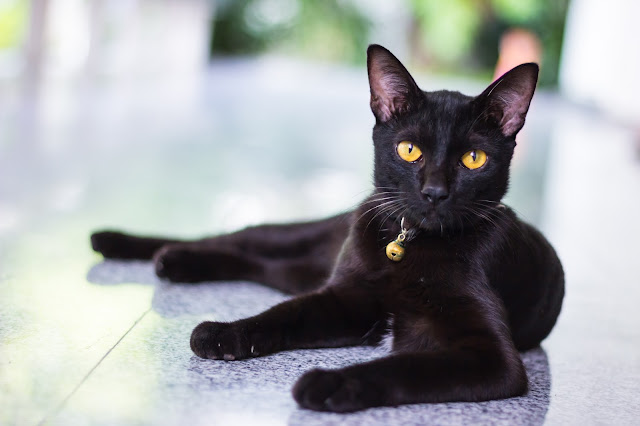 |
| Would this cat wait longer to be adopted from a shelter than a lighter-colored cat would? Photo via Adobe Stock. |
What is black cat syndrome?
“Black cat syndrome” describes the phenomenon in which mostly dark-colored cats wait longer to be adopted than cats of other colors. Miranda
Workman and Christy L. Hoffman, both professors of animal behavior at Canisius
College in Buffalo, NY, designed a study to look for evidence of the syndrome
at a shelter in western New York. They analyzed records of 892 cat adoptions
between October 2012 and October 2013, comparing adoptability rates of black or
smoke cats to cats of other colors. Using Petfinder.com, the authors looked at things
like the number of clicks each cat received per day, how long each cat waited before
being adopted, and details of the cats’ online photographs.
On the question of coat color, “The black/smoke cats
received significantly fewer clicks per day and had a significantly longer
length of availability," Hoffman said.
So, it seems that black cats were less popular online, got
fewer looks from potential adopters, and spent more time in the shelter waiting
to be noticed. In other words, they suffered from black cat syndrome.
It's not all bad...
 |
| A mostly dark cat photographed in a mostly dark cage looks ... unhappy. Photo by Bruno Passigatti. |
Out of all the aspects of the photographs the researchers
considered, only two made any difference:
Cats photographed
outside of a cage and cats photographed with a toy were more popular than those
photographed in a cage or without a toy.
The takeaway
So, shelters, get those black cats out of their cages to take their pictures, and give them a prop that says, “Hey, look at me! I’m playful, fun, and interesting!” Hoffman and Workman summed it up basically the same way, but a little more scientifically: “Strategic use of toys in cats’ photographs may promote adoptions of cats who are typically overlooked.” (By the way, we love that they wrote “cats who are” rather than “cats that are.” Because, you know, a cat is not an object.) |
| A dark cat outside of a cage with a toy looks fun, playful, says, "Take me home!" Photo by cynoclub. |
(By the way again, in a separate study, Hoffman found no
evidence for “black dog syndrome”; in fact, that study found that black dogs
had a slightly shorter wait for adoption than dogs of other colors. Breed and
age were more important factors than coat color in dog adoptions.)
Sources
Canisius College. (2016, February 3). “No Evidence Found for
'Black Dog Syndrome.'” ScienceDaily.
Retrieved February 17, 2016 from
www.sciencedaily.com/releases/2016/02/160203185534.htm
Workman, M. K. & Hoffman, C. L. (2015). “An Evaluation of the Role the Internet Site
Petfinder Plays in Cat Adoptions.” Journal
of Applied Animal Welfare Science,
18(4), 388–397.
Abstract available at http://www.tandfonline.com/doi/abs/10.1080/10888705.2015.1043366?journalCode=haaw20


No comments:
Post a Comment